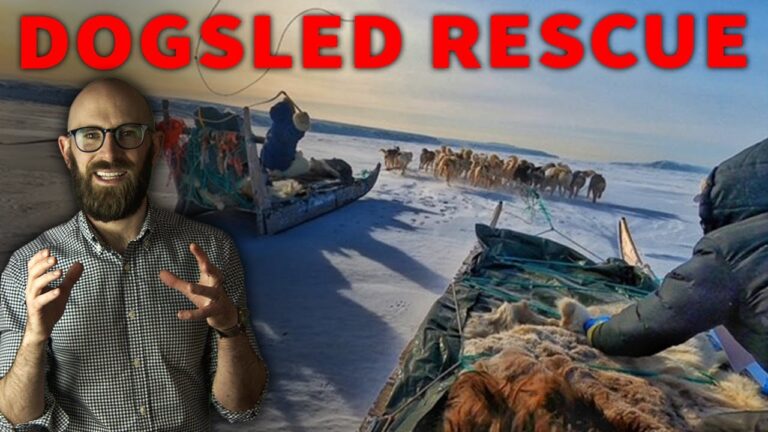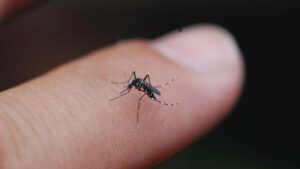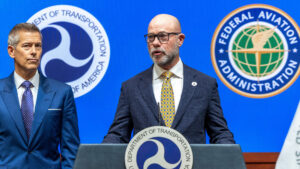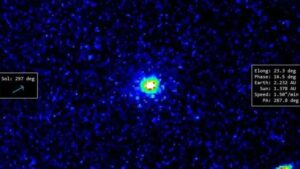“Unraveling the Mysteries: How Fire, Ice, and Plutonium Could Redefine Our Understanding of the Universe”
The now-pilotless aircraft kept flying northwards before making a 180 degree turn and plummeting earthward. At 6:39 it slammed into the sea ice covering North Star Bay at a speed of 900 kilometres per hour, the 102 tonnes of jet fuel aboard erupting into a massive fireball. As in the Palomares crash, the conventional explosives in the hydrogen bombs detonated on impact, scattering Plutonium across the ice – though once again no nuclear detonation was triggered.
Thanks to Captain Haug’s airmanship, all but two of HOBO 28’s crew landed within 3 kilometres of the Air Base. Haug and D’Amario actually landed among the buildings of the base itself, and informed base vice commander Colonel Paul Copher of the crash within minutes of each other. All available personnel and even the Base’s fleet of taxis was mustered to search for and rescue the other airmen. However, the combination of winter darkness, rough ice conditions, and -30 degree temperatures made this an exceedingly difficult task. Colonel Copher thus turned to Jens Zinglersen, the local representative of the Royal Greenland Trade Department, who organized teams of local Greenland Inuit to search the ice using dogsleds. In this manner, three of the surviving airmen were rescued within two hours of the crash while the body of Captain Svitenko was discovered after eight hours. The last man, gunner Staff Sergeant Snapp, had landed nearly ten kilometres south of Thule. He wrapped himself in his parachute and spent a very uncomfortable night on an ice floe before finally being rescued 21 hours later, alive but suffering from hypothermia. For his actions, Zinglersen was later awarded the Air Force Exceptional Civilian Service Medal.
Meanwhile, over the following nineteen hours helicopters from the 54th Air Rescue and Recovery Squadron flew nine sorties over North Star Bay to survey the crash site. Debris was strewn over an area of nearly seventy-five square kilometres, while smoke from the burning jet fuel had blackened an area of ice stretching one kilometre downwind of the impact area, heavily contaminating it with jet fuel and pulverized plutonium and uranium from the hydrogen bombs. Spotting none of the larger pieces which usually survive plane crashes – such as the tail and wingtips – observers initially reported that the aircraft had broken through the ice and sunk to the bottom of the bay.
Within hours of the crash, the incident was reported to civilian and military authorities in the United States and officially declared a Broken Arrow – U.S. military terminology for a major incident involving nuclear weapons but which carries no risk of triggering a nuclear war. Other related terms include Bent Spear – a minor incident involving nuclear weapons or materials; Empty Quiver – the loss or theft of a functional nuclear weapon; Nucflash – the accidental, unauthorized, or unexplained deployment or detonation of a nuclear weapon; and Dull Sword – a minor incident which impairs the function or deployment of nuclear weapons. But apart from the loss of one airman and four nuclear weapons and the massive environmental hazard posed by the toxic and radioactive materials scattered across the ice, the Thule crash was also a major diplomatic disaster. Since 1957, Denmark had maintained a nuclear-free policy outlawing nuclear weapons on all Danish territory – including Greenland. However, the United States Air Force concluded internally that the Chrome Dome overflights were permitted under the 1951 U.S.-Danish defence agreement, even though this agreement did not mention nuclear weapons. And while the Danes were not informed of the Greenland overflight and Thule Monitor missions, they were aware that the U.S. Air Force operated nuclear-armed bombers in the general area. Indeed, in the years leading up to the 1968 crash, several Chrome Dome B-52s had made forced landings at Thule, though given the emergency nature of these events they were not considered violations of Denmark’s nuclear-free policy. The timing of the Thule crash was particularly unfortunate, coming only 48 hours before a Danish national election. Wishing to avoid an international scandal, the U.S. Embassy in Denmark urged the Air Force:
“… to stress that [the] crashed plane was ‘diverted’ to Thule and not on [a] ‘routine flight to Thule’.”
This would remain the official narrative of the event for nearly two decades.
Four days after the crash, a meeting was convened between U.S. and Danish officials and technical experts to assess the situation and develop a decontamination plan. Those in attendance included Dr. Wright Langham, Biomedical Research Leader at Los Alamos National Laboratory; Dr. H.D. Bruner of the U.S. Atomic Energy Commission’s Division of Biology and Medicine; Professors Jürgen Koch and Otto Kofoed-Hensen, physicists from the University of Copenhagen; H.L. Gjorup, a health physicist from the Danish Atomic Research Establishment; and Dr. Per Grende, director of the Radiation Hygiene Laboratory at the Danish National Health Service.


















